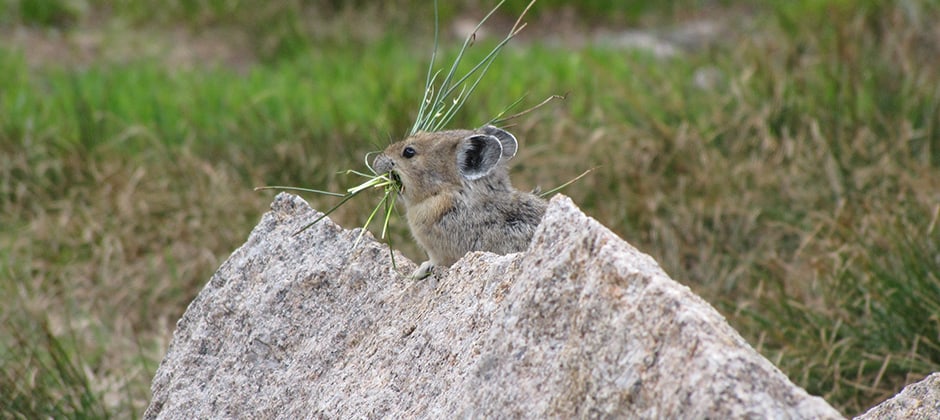Share this article
Resources drive pika responses to climate
American pikas are considered to be particularly vulnerable to climate change due to the high alpine regions that many of them occupy. Biologists have believed that genetics play a strong role in how they respond to climate, but new research suggests that’s not the case. Rather than genetics or even elevation, it’s the availability of resources like soils, vegetation and rocks that primarily drives their response.
“Both in the literature and among ecologists, researchers were pretty confident that genetic lineages would be most important in understanding species’ relationships to climate,” said Erik Beever, a research ecologist with the U.S. Geological Survey and one of the 70 co-authors of a study published recently in in Nature Climate Change.
Researchers wanted to determine how American pika (Ochotona princeps) range maps could be subdivided to capture if populations responded differently to factors like low humidity, snowpack duration and chronic heat.
Beever and his colleagues — most of whom helped provide three decades of pika detection data for the study — separated the pika locations into four different categories including genetic lineage, elevation, major mountain chain and ecoregions of particular resources like soil, vegetation and rocks for shade.
Using the decades of data, they modeled how the species responded to aspects of climate including temperature, humidity and precipitation, and determined which of the four division schemes had most-similar responses to climate.
It turned out that the ecoregions best captured how pikas in different areas responded to climate.
“Ecoregions won the day,” Beever said.
Not only can this help with pika conservation in the future, but the models the team created can also likely be used to inform predictions for other species. Overall, Beever said, the study is helpful in implementing local conservation measures.
Since conservation and management actions for most species occur at a local scale, Beever said, “this now informs which options might be most effective for those local-scale actions, and that’s kind of exciting.”
The results of the study can also help researchers reconcile why they’re seeing different results for the factors governing pika distribution and abundance in different study areas.
“We think that this new way of thinking of different responses across populations to climate has great potential to be a game-changer,” Beever said.
Header Image: The presence of resources like rocks, soil and vegetation drive American pikas’ response to climate change. ©Chris Kennedy/USFWS








